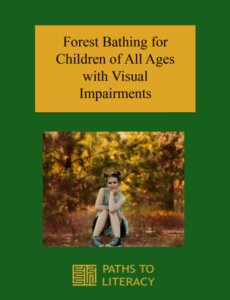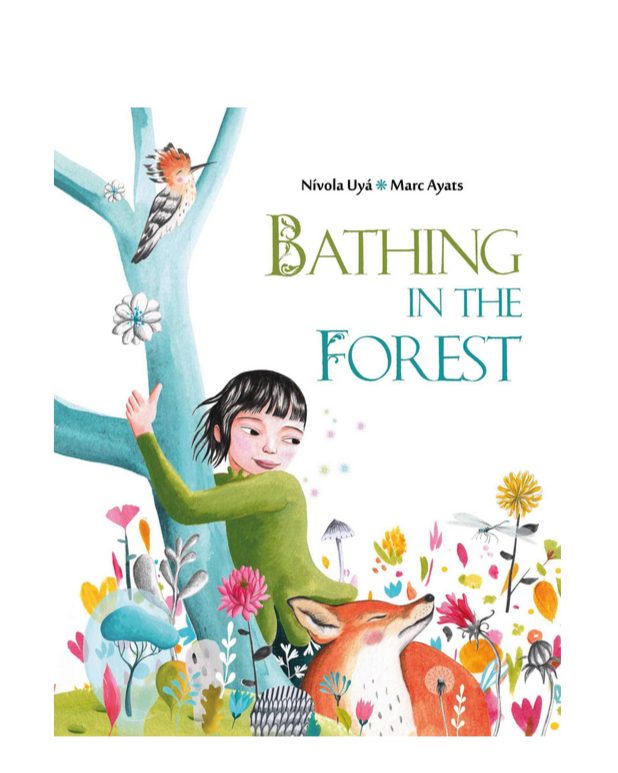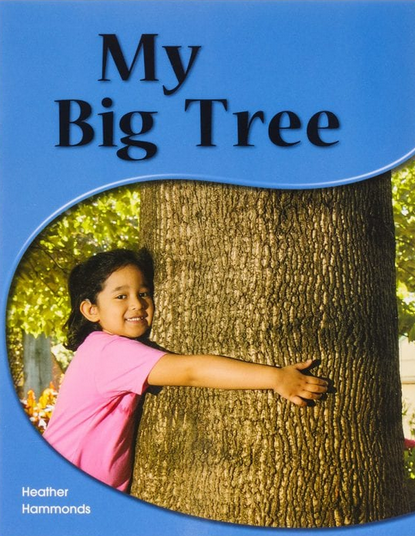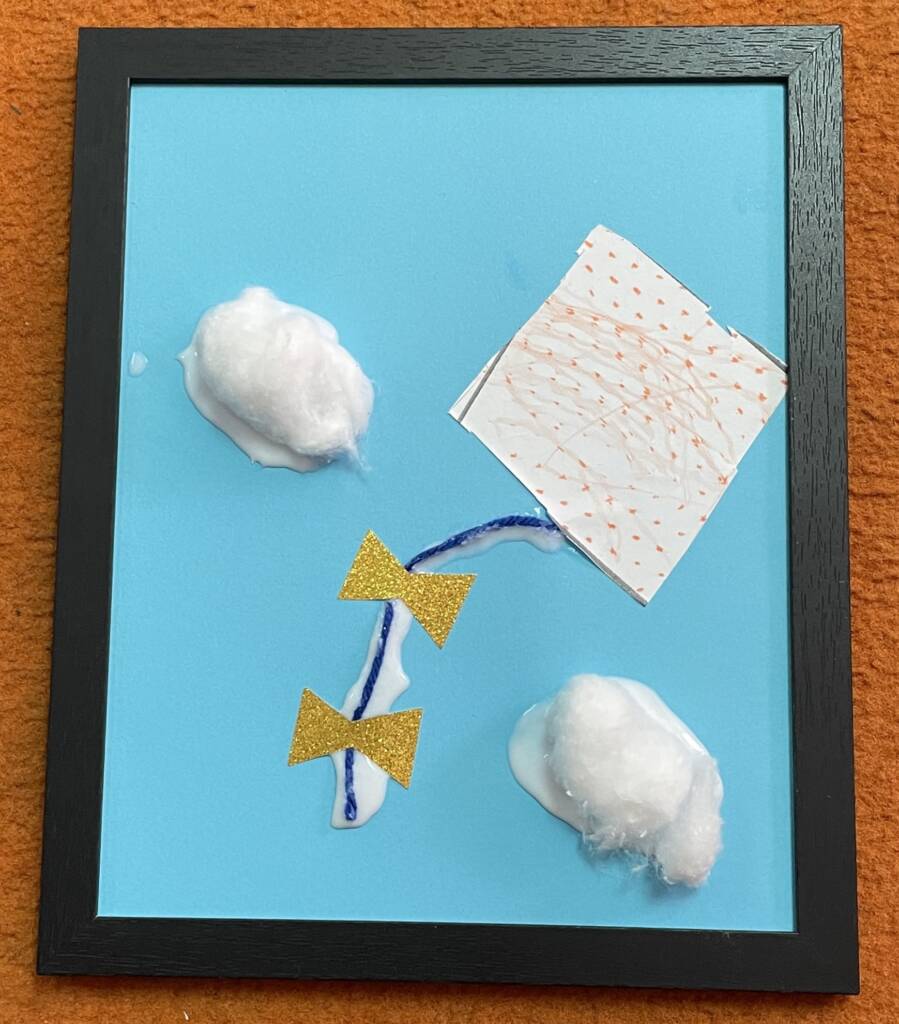What is forest bathing?
Forest bathing is a practice of appreciating nature by surrounding yourself in it with purposeful attention using your senses. It originally started in Japan and is called shinrin-yoku. It encourages people to engage in nature slowly and deliberately.
What are the benefits?
As reported by National Geographics Kids, “forest bathing is all about soaking in your surroundings and practicing mindfulness while in nature, whether it’s your backyard, local park, or an actual forest. Growing research shows us health benefits ranging from better sleep to reductions in the stress hormone cortisol.” Doing so can help children to be more calm, centered, and focused. It can also teach them how to manage stress by recognizing emotions and how to help their body react to it.
The best part is getting children out in nature, learning about it, and enjoying the beauty of nature! Children of all ages from toddlers to young adults can experience and learn from the practice of forest bathing. It can be adapted to age groups and specific needs.
Can we link literacy and learning with forest bathing?
Yes! First, having children centered, feeling calm, and ready to learn is a huge part of creating success. Learning takes place not only when content is introduced. Children need to be present, ready to learn, and part of the experience. Active learning has a much better learning and success rate than passive learning. Using the practice of forest bathing with literacy enables children to be active and part of the learning process.
Steps in Forest Bathing
Adapted for our children with visual impairments:
- Prepare them about the experience. Talk about what they will be doing and why. Encourage them to communicate their hopes and fears if they are able.
- Find a book about it or talk about similar experiences and how it felt. Bathing in the Forest, by Marc Ayats is available in English and Spanish print. APH (American Printing House for the Blind) has a series called, “Early Braille Trade Books: Rigby Nonfiction Kit 1, UEB Uncontracted,” which includes books about trees, ponds, and animals.
- Settle in, have them find a comfortable spot to relax and enjoy. Show them how to take deep, slow breaths and immerse themselves in the surroundings. Feel or see the light coming into the forest area. Ask them to describe what they are noticing.
- Focus on the sense of smell. Ask what they are smelling as they take in deep breaths of air. Is the air fresh, musty, sweet, wet? Can they smell any scents from the trees, grass, flowers, plants, or earth? Have them pick up some soil and smell it, or if there are sensory issues, put some soil in a container and encourage them to smell it from there.
- Focus on the sense of hearing. Have the children sit quietly and listen to the sounds. Can they hear the rustle of leaves and branches from the wind? What other noises are they hearing? Birds, squirrels, any other animals? This could lend itself to a lesson about bird sounds.
- Focus on the sense of touch. Ask them to feel the breeze on their face, hands, and hair. Touch the ground and if they want, feel the ground with their bare feet. Ask them what it feels like using describing words. Is it wet, cold, bumpy, rocky, soft? Touch trees and explore the different types of bark, leaves, and sizes.
Additional adaptations, all are included
With any activity, focus should be on the strengths and needs of each, individual child. Knowing them and what makes for a successful outcome is key for a positive experience. Children in adapted seating, like wheelchairs, need to be brought to an area that is easy to travel to, so make sure the travel is one that is accessible. Children who have hearing loss may need adapted activities that focus more on smell, touch, or sight.
If the child has sensory impairments, adapt to their comfort level. Try putting individual items in a tray and describing them while touching them first. Children who have CVI (Cortical/Cerebral visual impairment) or autism often benefit from this approach. Also, be aware of over-stimulation in a new environment. Discuss before, during, and after, and create a safer space for them. Children who have CVI often have less ability to visually be aware of their surroundings when put in new environments so take it easy the first few times.
Lesson Ideas
Using forest bathing as a way for relaxing, centering, and being one with nature is just the start of the benefits. Forest bathing also lends itself for wonderful learning opportunities.
Young children
- Have young children make pictures of what they experienced. This can be through drawing, using rubbings of collected items to create texture, or gluing some of these items to paper or a collection journal.
- Make a story about the event. Brainstorm ideas and create a personalized story that can include items found or pictures that you took with an iPad or camera.
- Make a touching tray of collected items so they can show and share it with others.
Older children and adults
- All ages benefit from forest bathing, especially older children and adults. Teaching them that nature is a way to calm and connect is an excellent life skill. Have them journal their thoughts about each time they forest bathe. Create a hand made journal that is special just for the purpose. If they want to illustrate, write, or post pictures let them take the lead.
- Forest bathing can connect with curriculum goals. Look at benchmarks for different grades and make connections like learning the seasons, how trees grow, local wildlife, etc. Find what the student especially felt connected to and let them research the topic more.
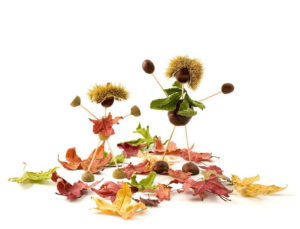
Healing Forest website offers free lessons and ideas that include:
- Shinrin-Yoko Introduction
- Healing Forest Walks
- Art in Nature
- Kindness & Clarity Walk
- Mindful Play in Nature
- Seeds of Change
- Forest Meditation
